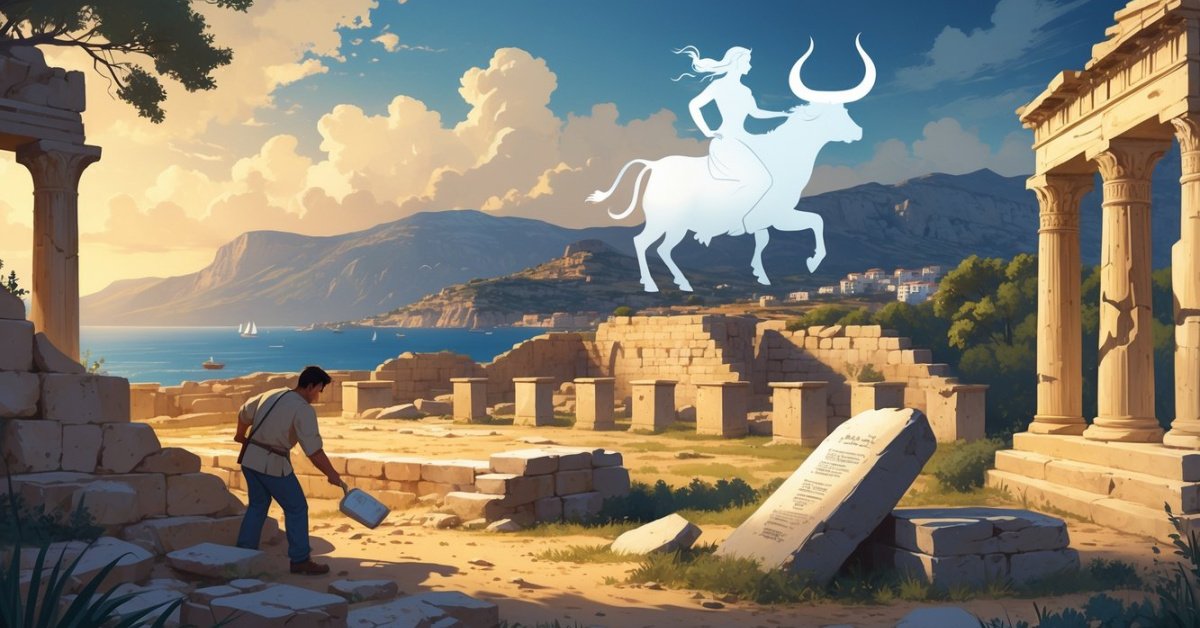Cyprus has stood at the crossroads of many cultures for thousands of years. This long history has left behind stories and secrets that still puzzle people today.
Some of the biggest historical mysteries in Cyprus include ancient lost cities, unexplained underground buildings, and strange legends that have no clear answers. Experts and visitors are fascinated by discoveries like a 9,000-year-old circular structure on Mount Troodos. The true purpose of this building remains unknown, as highlighted in the story about the mysterious building.
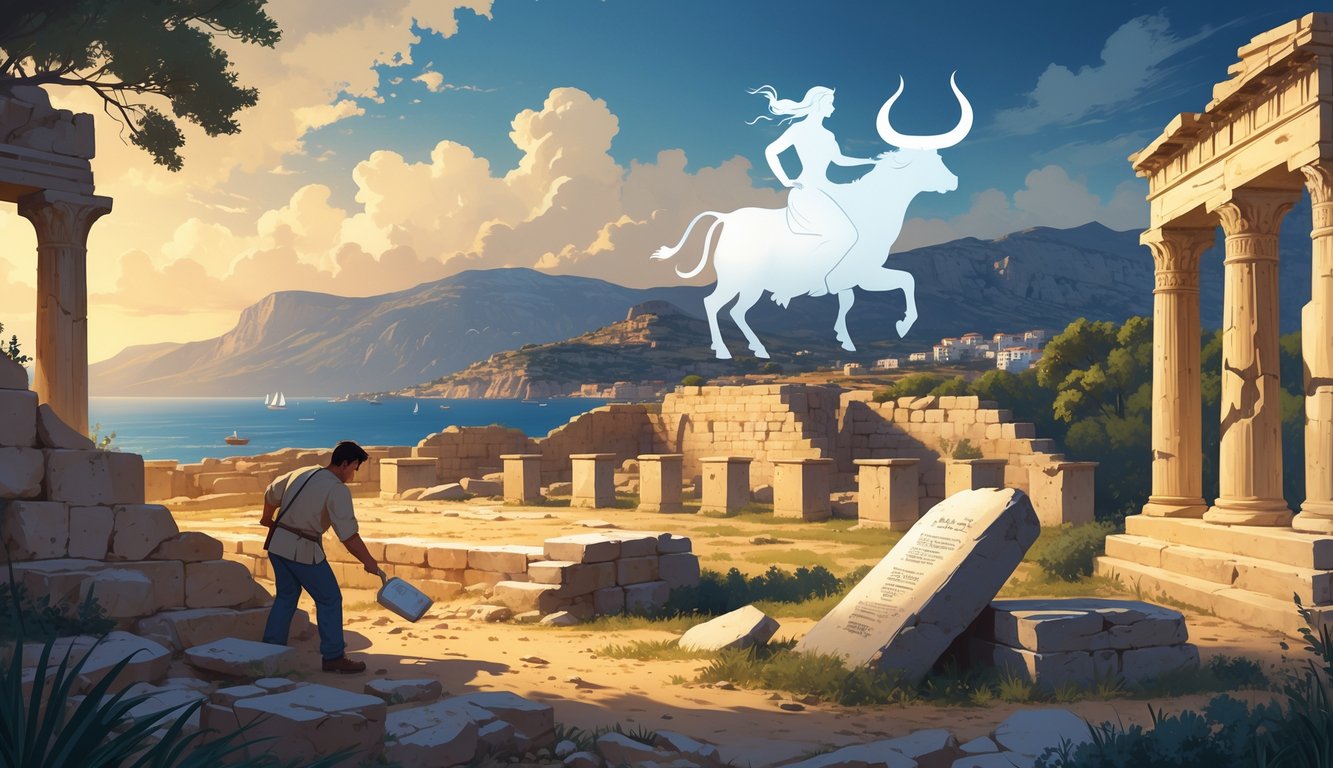
Other mysteries include questions about prehistoric settlements and ancient cities on the northern coastline. Myths have also shaped the island’s culture.
The Tombs of the Kings: Enigmatic Necropolis
The Tombs of the Kings in Paphos form a vast underground necropolis carved from limestone. This UNESCO World Heritage Site has impressive burial chambers from the Hellenistic and Roman eras.
The true identities and customs of those buried here remain unclear.
Unexplained Burial Practices
Although called the Tombs of the Kings, historians have found no evidence that actual kings were buried here. The site dates back to the 4th and 3rd centuries BC, during the Hellenistic period after the monarchy in Cyprus ended.
Archaeologists believe wealthy officials and high-ranking citizens were laid to rest at this site, not royalty. Tombs show a mix of Greek and local traditions, but some customs are not fully understood.
For example, tombs are arranged with courtyards and columns, resembling the homes of the living more than ordinary grave sites. There is little information about the ceremonies that took place or why some tombs remain unfinished.
Despite detailed carvings, few valuable items have ever been discovered inside. This raises questions about the practices around burial and grave goods.
Limestone Structures and Their Mysteries
Each tomb in the necropolis features careful carving from local limestone. Chambers, columns, atriums, and stairways show impressive stonework, especially given the tools available more than 2,000 years ago.
Some tombs are decorated with frescoes and carved details, but many have plain walls. Experts wonder if status or wealth decided the level of decoration.
Many limestone details remain visible, even though the rock weathers quickly. A few tombs include underground rooms and unusual features that don’t match known building styles from either the Hellenistic or Roman periods.
The reason for these differences is still debated. To learn more about these ancient structures, visit the Tombs of the Kings.
The Role of Roman and Hellenistic Periods
Most of the tombs were built during the Hellenistic period, after the 3rd century BC, when Paphos was a thriving city. The site continued to be used and expanded in the Roman period.
Roman additions changed the original design, adding new chambers or entrances to older tombs. Hellenistic tombs usually have open courtyards surrounded by columns, while later Roman ones add new decorative and structural touches.
Different communities used the necropolis over hundreds of years. Some tombs reflect changes in burial customs, art, and religion.
The site is now a UNESCO World Heritage Site, recognized for its historic value and the mysteries it still holds.
The Puzzle of Choirokoitia: Neolithic Settlement
Choirokoitia is a remarkable archaeological wonder in Cyprus. It is known for its ancient stone houses, unusual animal remains, and unique burial sites.
Its mysteries give insight into the challenges and customs of Cyprus’s earliest farming communities.
Architectural Marvels of Early Inhabitants
Choirokoitia’s ancient settlement dates back to about 7000 BC. It features tightly packed round houses made from stone and mudbrick.
These homes, some with thick walls over one meter wide, were arranged closely together and protected by sturdy perimeter walls.
Key Features:
- Circular Houses: The round design of the houses was unusual for the time and may help with stability and heat retention.
- Community Planning: Pathways between houses formed narrow streets, showing organized planning and cooperation.
- Defensive Walls: Thick outer walls suggest that safety from outside threats was a real concern.
Excavations have uncovered grinding stones, hearths, and tools that reveal daily life. People likely lived in small family groups, sharing resources and working together to survive.
Choirokoitia’s design stands out among prehistoric Mediterranean sites. It offers a rare glimpse into early settled life in Neolithic Cyprus.
The Pig-Farming Phase Mystery
One of the site’s biggest puzzles is the “pig-farming phase.” Archaeologists found a sudden increase in pig bones at Choirokoitia, suggesting that the inhabitants started raising pigs on a larger scale.
This shift is strange because raising pigs requires lots of food and space. It is not clear why the people chose to rely on pigs more than other animals like sheep or goats.
Possible reasons include:
- Changes in local vegetation making pig farming easier.
- Social or religious needs for pigs in daily life or ceremonies.
- An environmental decline made pigs easier to raise than other livestock.
No written records exist from this period. Experts must look at the site’s layers and compare animal bones for clues.
The unanswered questions about Choirokoitia’s pig-farming phase continue to challenge archaeologists.
Burial Customs and Social Structure
Burial practices at Choirokoitia reveal how early Cypriots viewed family, society, and the afterlife. Most people were buried beneath the floors of their homes, sometimes with personal objects or tools.
Graves were simple, often marked only by the home itself, not by special monuments or tombstones. This suggests that people placed high value on the family unit and domestic life.
What burial finds suggest:
- Only some bodies had grave goods, which may show rank or different roles within society.
- No signs of kings or rulers, hinting that the community was likely equal and cooperative in nature.
- Burial location choices reflect close family ties and possibly ancestor worship.
These customs show how people at Choirokoitia built a complex society centered on family, daily life, and respect for the community. This makes it one of Cyprus’s most intriguing archaeological sites.
Unsolved Questions Surrounding Roman Villas
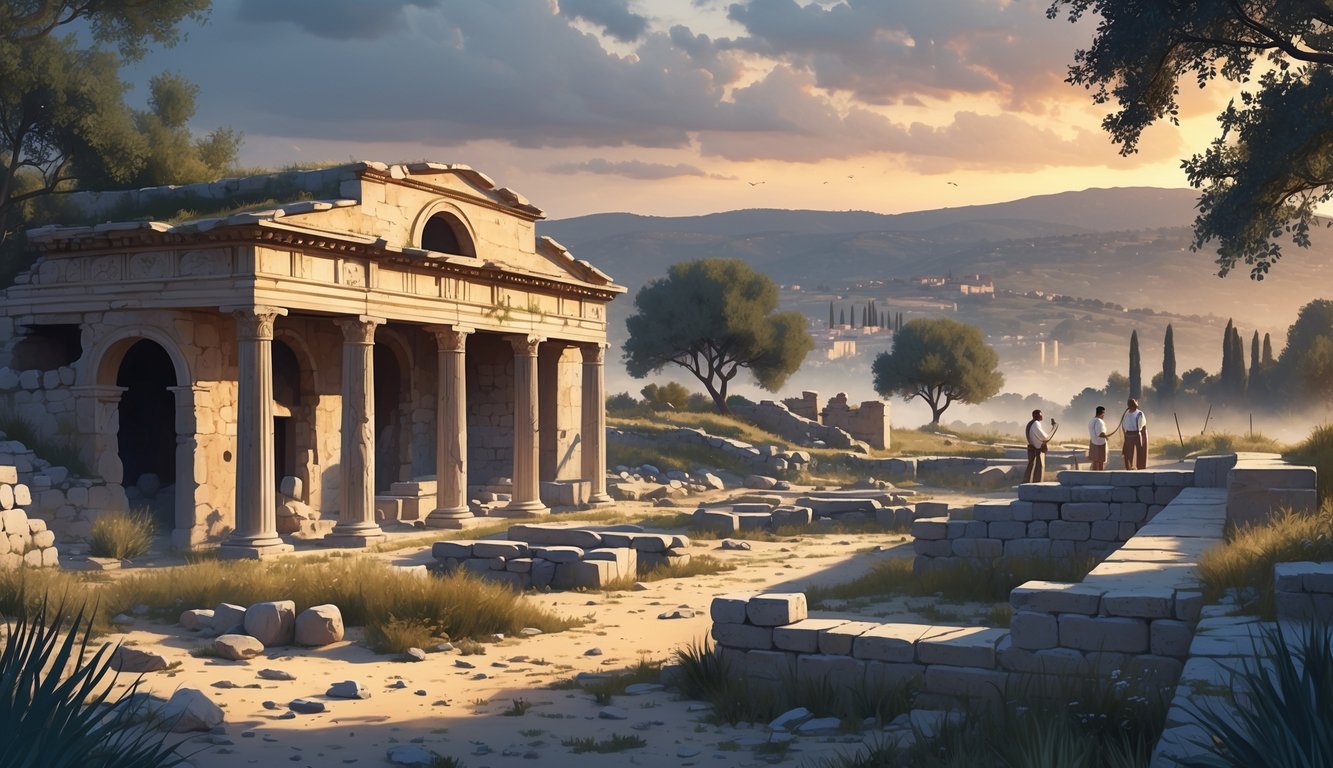
Roman villas in Cyprus hold many historical puzzles. Archaeologists continue to uncover new finds that raise questions about art, trade, and daily life at these ancient sites.
Frescoes and Their Hidden Meanings
The walls of many Roman villas display vibrant frescoes. These paintings often show scenes from mythology, daily life, or landscapes.
The meanings behind some figures and symbols remain a mystery. Experts wonder if some frescoes shared messages with guests or had deeper religious or family importance.
In some villas, unusual symbols or rare animals appear. Researchers debate if these were meant for protection, status, or decoration.
Frescoes at major archaeological sites sometimes include styles not common in local art. This has led to studies about Roman influence and local traditions blending together.
Pottery Finds and Cultural Exchange
Pottery discovered at Roman villas can tell stories about the people who used them. Pieces found in Cyprus come in many shapes and styles, including pottery made both locally and in other regions of the Roman Empire.
Some jars, plates, and storage containers have marks or designs not usually seen in Cyprus. Experts wonder if these items arrived through trade or if artists traveled to Cyprus to work.
The variety of pottery points to contact with other cultures, but details about these exchanges remain unclear.
| Pottery Type | Likely Origin | Key Features |
|---|---|---|
| Amphorae | Greece, Italy | Tall, used for transport |
| Terra Sigillata | Western Roman Empire | Shiny red slip |
| Local Wares | Cyprus | Handmade, simple designs |
These finds help show how open Cyprus was to outside influence in the Roman era.
Daily Life of Ancient Residents
Archaeological sites suggest Roman villa residents enjoyed baths, feasts, and gardens. Tools, coins, and food scraps give hints about their lives.
Researchers still ask how many people lived in each villa. Did they have slaves, or work the land themselves?
Some villas have large kitchens and storerooms, while others seem designed for luxury and entertaining guests. Animal bones, plant remains, and ancient trash heaps help piece together daily life.
Decisions around diet, work, and family are not always clear. Each new discovery can change what scholars know about how people lived in these Roman villas.
Lost Cities and Forgotten Settlements
Cyprus holds stories of places that once buzzed with life and then quietly faded away. Many vanished towns and hidden foundations still puzzle historians and archaeologists.
Disappearance of Ancient Communities
Through the centuries, entire communities in Cyprus have vanished without a trace. Some settlements were abandoned due to natural disasters, while others faded away because of war, shifting trade routes, or forced relocations.
Modern researchers use old records, satellite images, and fieldwork to track down these sites. A well-known example is the city of Amathus, which stands out for its mysterious beginnings.
Unlike many other Cypriot cities, historians have found no evidence of an earlier settlement underneath Amathus. The reasons for its unique development and eventual disappearance remain unknown.
In the last century, the island saw even more villages deserted, especially during times of major political and social change. Some of these areas have stayed empty, leaving behind broken buildings and barely-there traces of daily life, as explored in studies on vanishing villages in Cyprus.
Search for Hidden Foundations
The hunt for forgotten settlements across Cyprus continues. Archaeologists and historians focus on finding remains of cities and villages that records suggest once existed.
Their methods include careful excavation, detailed mapping, and new technologies to scan the ground for hidden walls or artifacts. Amathus is a key area of interest because its early beginnings are not well understood.
Unlike most ancient Cypriot cities, there is no clear evidence of Bronze Age roots or who founded it. This makes each discovery in the area important for learning how the island’s ancient communities emerged and grew.
Research teams also work along the coast and in remote hills, following clues from old writings and local legends. Sometimes, even small finds like pottery, coins, or building stones lead to bigger discoveries about lost towns and daily life in the past.
Archaeological Wonders of Paphos
Paphos stands out in Cyprus for its ancient ruins and archaeological sites. The city’s monuments and layout highlight its role in history and culture.
UNESCO World Heritage Status
Paphos is listed as a UNESCO World Heritage Site. This status recognizes its ancient temples, mosaics, and tombs.
The Kato Paphos Archaeological Park protects many of these treasures. Top highlights include mosaic floors from the Roman period, grand villas, and theaters.
These sites show how people lived and entertained thousands of years ago. Historians and tourists from all over the world visit to see the preserved art and architecture.
The Tombs of the Kings are especially well known. Carved into solid rock, these tombs were built for nobles and high officials.
Their design and scale make them an architectural marvel.
Unique Distance and Layout
Paphos’s archaeological landmarks are spread over a large area. Major monuments sit near the harbor, but others require exploration farther out.
This distance lets visitors see more of the city and its scenery. Maps and site guides help people plan their visit and find hidden gems.
Some sites are several kilometers apart, offering a mix of coastal views and ancient architecture. A typical tour might include stops at grand mosaic houses, the ancient theater, and the Tombs of the Kings.
Each spot tells part of Paphos’s story. Together, they create a journey through time.
The Troodos Mountains’ Ancient Mysteries
The Troodos Mountains in Cyprus have a rich history with strange archaeological sites. Discoveries in the area give clues about life thousands of years ago.
Strange Finds in Mountain Caves
Archaeologists have found artifacts and structures in Troodos’s caves. These caves hold pottery, tools, and stone pieces from ancient times.
A 9,000-year-old circular building was discovered on Mount Troodos. Its purpose remains unknown, but its size suggests it was important.
Some think it was used for ceremonies or meetings. The caves also show old paintings or carvings on the walls.
Experts study these symbols to learn their meaning. Each new find helps piece together Cyprus’s ancient history.
Sacred Sites and Rituals
The Troodos Mountains hosted more than regular settlements. Evidence shows these mountains were important for religious activity and rituals.
Some areas are linked to myths, such as being the home of Dionysus, the Greek god of wine. Ancient people created sacred sites here to honor their gods.
Large stone circles and altars have been found. These suggest worship played a big role in the region.
Some sites include remains of offerings like animal bones or special pottery. Rituals likely brought communities together and connected them to their beliefs.
Ongoing research continues to reveal the importance of these sacred places.
Mysterious Underwater Discoveries
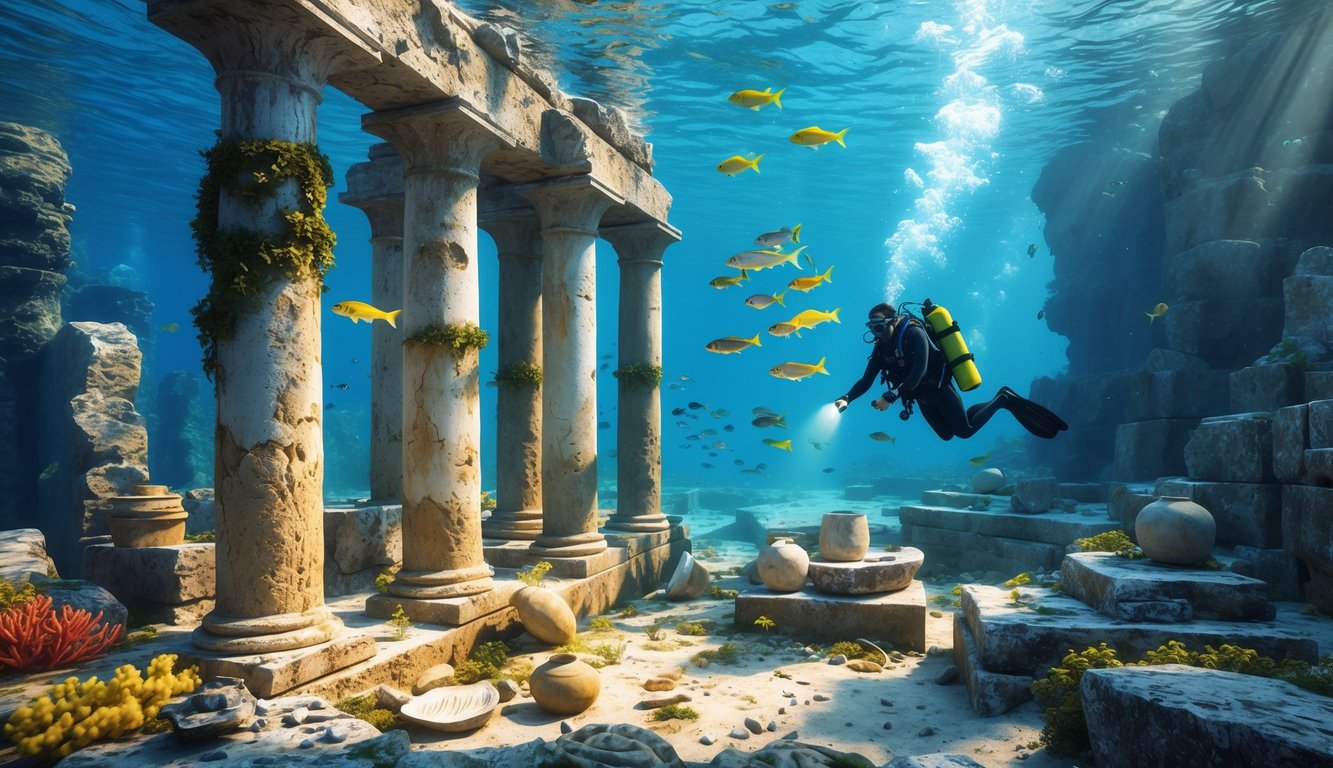
Cyprus is known for its intriguing underwater finds. These discoveries reveal much about ancient trade, sunken artifacts, and daily life on historic beaches.
Shipwrecks and Lost Artifacts
The Kyrenia shipwreck is one of Cyprus’s most famous discoveries. Found near Kyrenia, this 2,300-year-old ship shows how Greek traders lived and worked.
Archaeologists uncovered cargo like wine jars, almonds, and millstones. These finds offer a glimpse into trade routes and diets from the fourth century BCE.
The ship measured about 14 meters long. Its wooden structure and cargo are now preserved in a local museum.
Historians consider it one of the best examples of ancient Greek shipbuilding. Its contents help us understand Cyprus’s role as a trade center.
Other dive sites have revealed unique items such as tools, coins, and personal belongings. These artifacts help researchers trace trade, warfare, and daily routines.
Secrets of the Ancient Beaches
Many secrets still lie beneath the shallow waters near Cyprus’s beaches. Archaeologists continue to explore these spots, where shipwrecks and settlements have been buried by time.
Some underwater digs have uncovered mysterious stone structures or unusual objects. Curious finds include:
- Rare amphoras with unknown symbols
- Jewelry made from local seashells
- Carved stones with debated purposes
On certain beaches, explorers have found bones and everyday items. These discoveries show these locations once bustled with activity.
Natural changes and human presence have left a unique archaeological record. For more, read about bizarre underwater discoveries around Cyprus.
Controversies and Challenges in Cypriot Archaeology
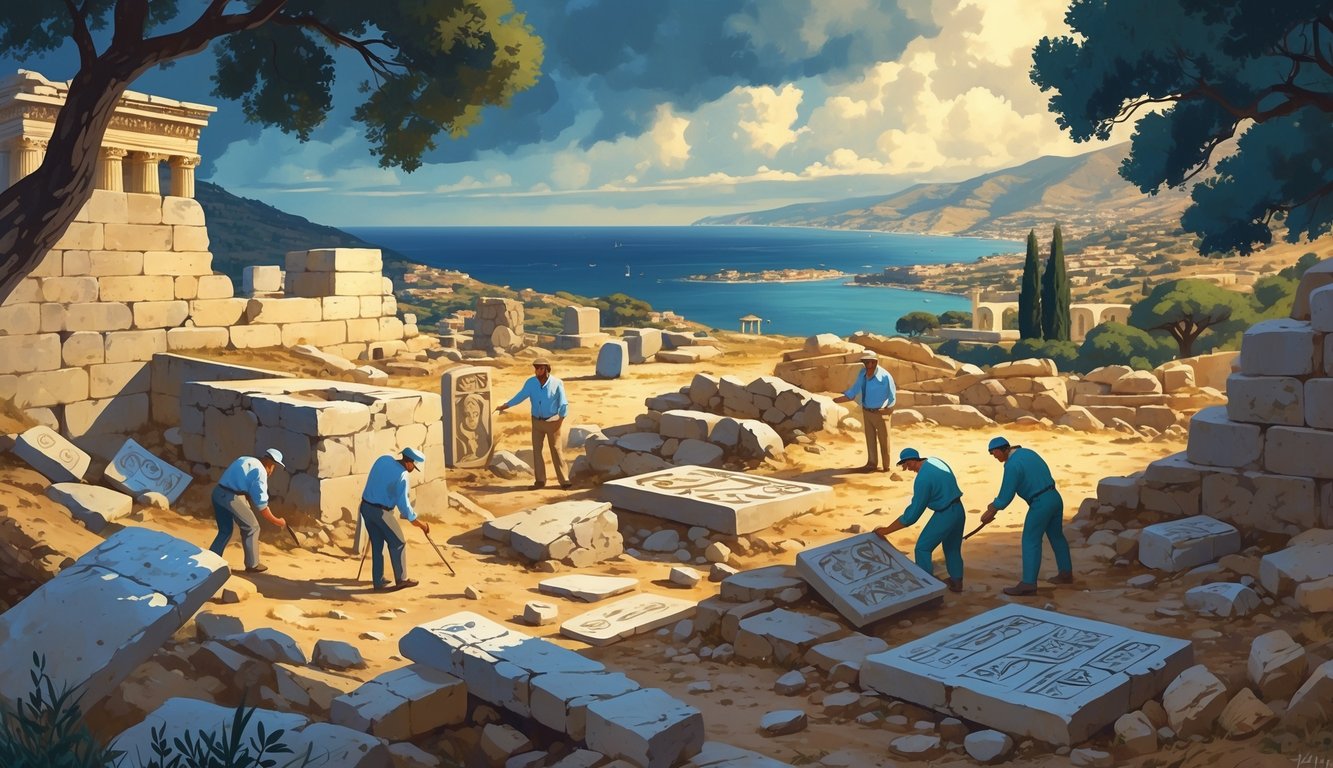
Cypriot archaeology faces many hurdles, including legal issues and illegal digging. Debates continue over managing ancient sites and protecting artifacts.
Role of the Department of Antiquities
The Department of Antiquities leads the care and protection of Cyprus’s ancient sites. This group monitors excavations, gives permits, and works with local and international experts.
Many archaeologists debate the department’s authority over site access. Some say strict rules hold back research, while others see them as necessary to prevent illegal excavations and looting.
International partnerships can be tricky, as foreign teams must follow local laws and supervision. Some believe this limits discovery, while others say it protects Cyprus’s heritage.
The department must balance public interest with careful management. For more on the department’s impact, see this overview.
Preservation Efforts by Authorities
Cypriot authorities face threats to ancient sites from illegal digs, construction, and political tensions. Protection measures include surveillance, law enforcement, and education to stop looting.
They work with art historians, scientists, and law enforcement to return stolen artifacts. Public awareness efforts teach people why preserving artifacts matters.
Political issues and limited resources often slow these efforts. Cyprus has laws to limit damage from modern progress and black-market activity.
Find more information about legal challenges and preservation in this study.
Unanswered Questions About Artistic Heritage
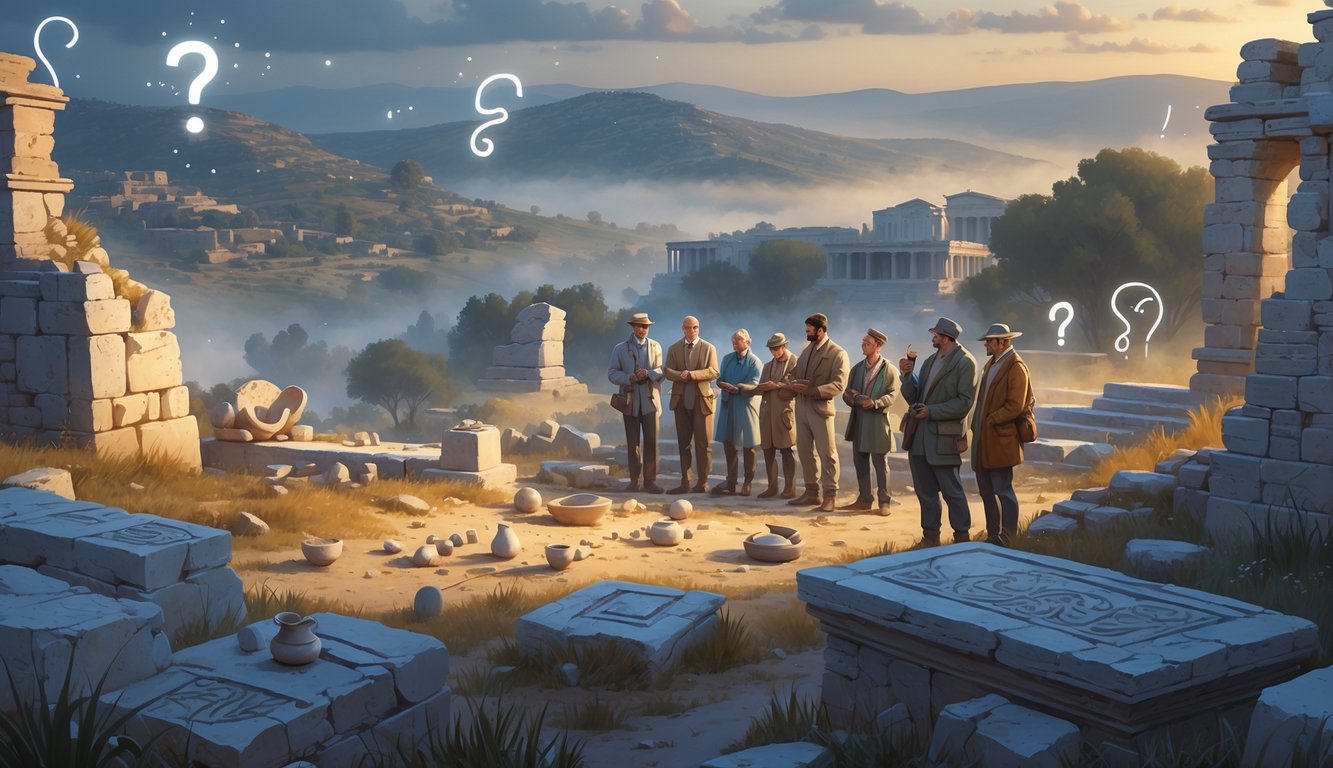
Art in Cyprus shows layers of history, seen in ancient churches and pottery. Many details about old artistic methods and meanings still puzzle researchers.
Fresco Techniques and Materials
Cypriot frescoes decorate many churches and monasteries from the Byzantine and Hellenistic periods. The exact methods for mixing pigments and applying paint remain unclear.
Scholars try to discover which local minerals and plants created each color. Historical records are limited, so it is unclear if artists used set recipes or improvised.
Some frescoes have survived for centuries, while others faded quickly. Studying these materials could reveal why some pigments resist humidity or flaking.
A table of common fresco materials found in Cyprus:
| Material | Description | Possible Source |
|---|---|---|
| Lime Plaster | Main background for painting | Local limestone |
| Red Ochre | Deep red pigment | Natural clay deposits |
| Malachite | Green hue | Copper mining regions |
| Egg Yolk | Binder for color | Domestic chickens |
Without full knowledge of techniques, restoring damaged art is a challenge. Every scientific discovery about fresco materials helps protect heritage.
Symbolic Meanings in Ancient Art
Ancient pottery and wall paintings from Cypriot Hellenistic and Roman times are filled with symbols. The meanings of many motifs—swirls, animal shapes, or gods holding objects—are still debated.
Some patterns may show family status, trade roles, religious beliefs, or protection from evil. No texts from artists explaining their intent have survived.
Experts compare Cypriot symbols to those in Greek, Roman, and Middle Eastern art, but local twists often change interpretations. For example, a dolphin image could mean good luck at sea, but its use beside wheat images may mean something else.
Recurring symbols in Cypriot art include:
- Fish and dolphins (possible protection for sailors)
- Olive branches (peace or agriculture)
- Snake motifs (healing or guardianship)
Understanding these symbols could teach us more about daily life and beliefs in ancient Cyprus. Many questions remain, so art historians keep searching for new findings.
For more about unresolved art mysteries, see this list.
The Ongoing Search for Cyprus’s Past
Uncovering Cyprus’s history takes patience and new technology. Scientists and historians keep searching, making new discoveries and solving old mysteries.
Modern Archaeological Methods
Archaeologists in Cyprus use traditional digging and new technology to study ancient sites. Tools like ground-penetrating radar and 3D mapping help researchers examine ruins without disturbing them.
Digital databases and drone photography allow teams to document findings quickly and in detail. This protects more sites and lets experts share data worldwide.
Modern labs analyze small fragments to learn about ancient diets, materials, or travel. Teams work with historians and local experts, combining oral histories with scientific data.
Many important archaeological discoveries on Cyprus’s northern coast have come to light thanks to these methods. The search for lost cities and relics continues with these advances.
Future Discoveries and Their Impact
Each new discovery in Cyprus can change what people know about the island’s past.
Ancient sites, revealed by changing landscapes or new technology, may offer new clues about daily life, trade, or conflict from thousands of years ago.
Future archaeological research may uncover unsolved mysteries, such as unidentified ancient settlements hidden underground.
These finds could lead to updates in history books.
Researchers share data and work together to ensure discoveries have clear historical significance.
Their search helps people better understand where Cyprus fits into the wider story of the ancient world.

